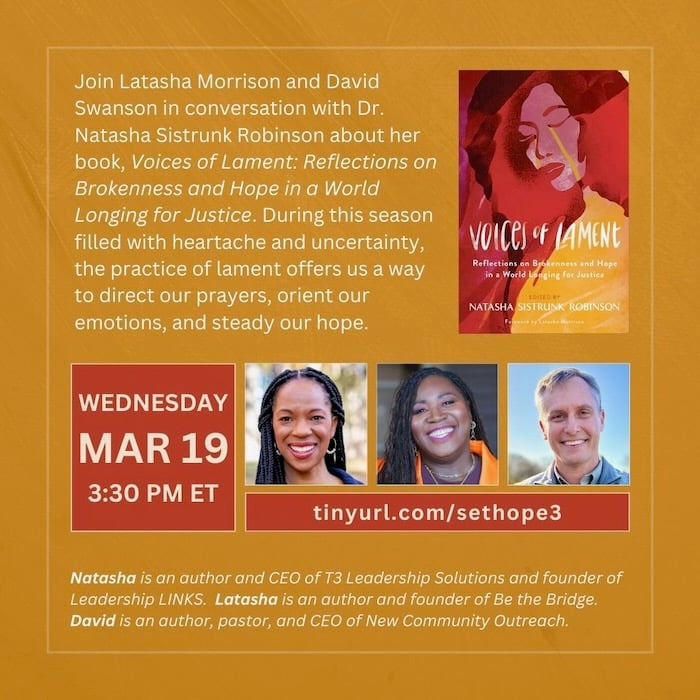Reconciliation and Prophetic Witness
Let your light shine before others...

One of the inside lines among some of our church’s leaders is, “There’s no curriculum for this.” Usually said during a conversation about a tricky challenge or opportunity that has presented itself in our multiracial congregation, it’s a playful acknowledgement that, despite increasing in recent years, congregations like ours are still pretty rare.
Over time, I’ve become more agnostic about whether the percentage of multiracial should increase. Our location in a majority Black neighborhood where we serve and worship with Black churches has convinced me beyond any doubt of our collective need for these congregations. The same can be said about immigrant churches which purposefully form their members away from the idolatry of whiteness. And in my first book, I argued against majority white churches prioritizing racial diversity before first addressing the racialized discipleship which left us content in our segregation for so long.
While I’m personally committed to racially reconciling churches and believe we need more of them, I’m chastened in my expectations. For reasons both admirable – the witness of the Black church – and lamentable – the creeping appeal of racial whiteness – I expect multiracial churches to remain in the notable minority for the foreseeable future.
What role, then, do multiracial congregations play in the wider church landscape? If, like me, you’re realistic about the slow spread of the faith-based reconciliation movement, how can we think about these strange and scattered communities?
I’ve come to understand intentionally multiracial churches, churches which purposefully pursue racial justice and reconciliation from their theological convictions, as prophetic witnesses. Of course, every church is meant to be a witness to Jesus. “You are the light of the world,” Jesus told his disciples. “A city built on a hill cannot be hid… let your light shine before others, so that they may see your good works and give glory to your Father in heaven.” (Matthew 5:14, 16)
This central understanding of the purpose of any church is why multiracial churches should understand their witness as being prophetic in two directions. First, these congregations act as a prophetic word against the status quo. Within the constraints of our racialized society, the material impacts of systemic racism and white supremacy are taken for granted: public school funding formulas, generational wealth, maternal health outcomes, exposure to air pollution, etc. A racially reconciling church, by its very existence, exposes the temporal nature of these seemingly permanent features of contemporary life.
(Readers of this newsletter will hopefully understand the kind of church I have in mind. There are, alas, plenty of racially diverse congregations with little interest in genuinely Christian reconciliation and even less interest in applying our discipleship to Jesus to racially wicked systems.)
A multiracial church is also a prophetic witness in the way it points forward, beyond the constraints of the present, to God’s good future. The ways these churches choose to persistently upend cultural dominance and racial supremacy to foster beloved community is a glimpse of God’s kingdom come. The utter impracticality and cultural irrelevance of these churches is an echo from a coming epoch when pragmatic peace-making with rotten, racialized premises is banished forever.
What Isaiah writes about God’s restoration should be provoked by a reconciling congregation’s witness, “I am about to do a new thing; now it springs forth; do you not perceive it?” (43:19) It’s not that these churches can fully capture God’s redemptive future; not remotely! These women and men, learning to live and serve across cultural lines of hostility, will experience all of the weaknesses common to Christian communities. But in their repeated decision to reconcile to one another, to orient their priorities around God’s shalom, those with eyes to see will see something beautiful about the age to come which can’t be contained to the age to come.
I’ve come to expect that these racially reconciling prophetic witnesses will remain relatively scarce. Thankfully, though, there are enough to speak truth to the status quo and hope about God’s good future, small seeds reaching for good soil from which they will grow slowly as evidence of God’s righteousness and justice.
(Photo credit: Bayram Er.)
This is the fifth part of an ongoing thinking-out-loud series about the faith-rooted racial reconciliation movement during these chaotic days. Here are part one, part two, part three, and part four.
Voices of Lament

I get to hang out with my friends again in a couple of weeks, this time to talk about the timely themes from a beautiful book edited by Dr. Natasha Sistrunk Robinson, Voices of Lament. I hope you can join us.